You can contact LEARNZ, part of CORE Education, at:
Postal Address:
PO Box 13 678,
Christchurch 8141,
New Zealand
The Central Interceptor (CI) is New Zealand’s largest wastewater project ever! Big machines are needed to do this work. A tunnel boring machine (TBM) will dig the tunnel and lay segments of the tunnel wall as it goes.
The TBM has three main jobs:
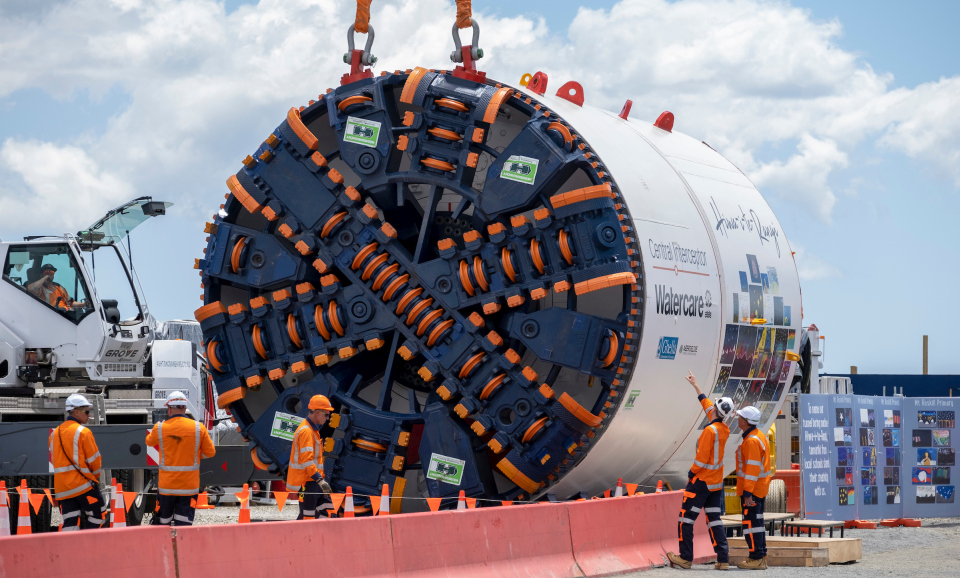
Most project construction will take place underground at 16 sites across central Auckland. At the main site in Māngere, an inlet shaft was built which the TBM and tunnel segments were lowered into. It is also used to remove the spoil dug while tunneling. The inlet shaft has a diameter of 12 metres and is 38 metres deep!
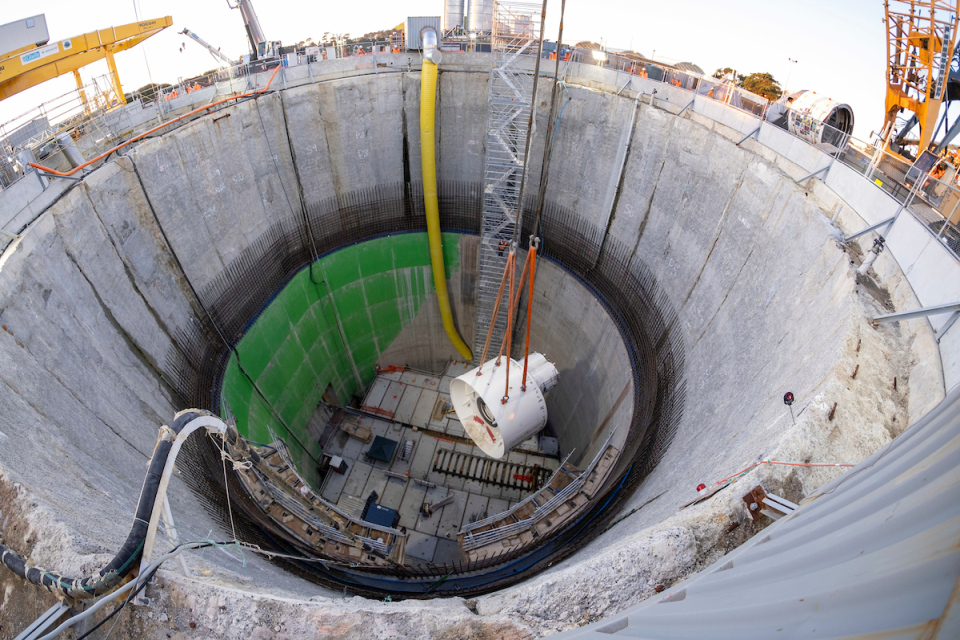
The project will dig through a lot of different types of rock and soil to lay the tunnel. Along the way, CI already found fossil shells (some around three million years old), kauri gum and even an ancient whalebone. The material that comes out of the tunnel (called ‘spoil’, which must be free of pollution) will be used to build up a former mining quarry on Puketutu Island, in Māngere. One day, this island will be opened to the public as a regional park.
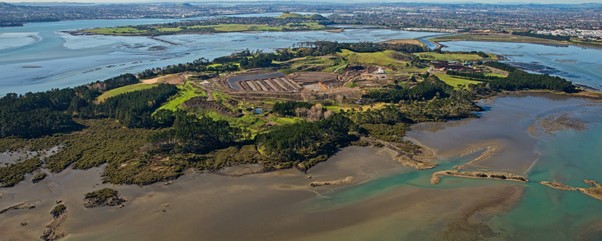
Segment rings form the lining of the tunnel and each weigh three tonnes. There are six segments that form each ring, measuring 4.5 metres wide. The segments are made from precast concrete by local company Wilson Tunnelling. They are made with a special three-millimetre lining to prevent the concrete in the pipe from rotting. The CI tunnel will use more than 9,200 segment rings!
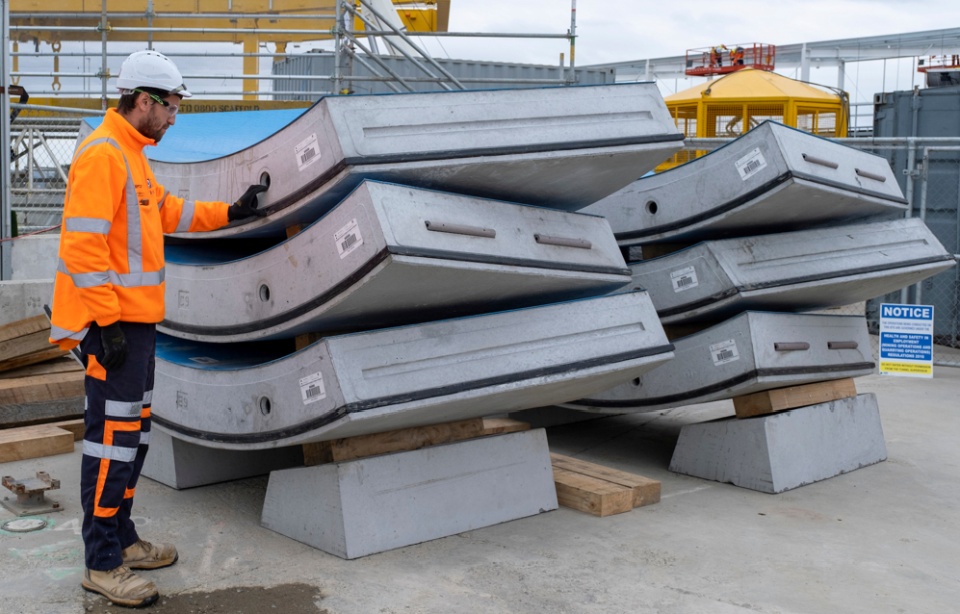
Electric locomotives are used in the CI tunnel to take in segment rings and take out spoil. Each locomotive weighs 20 tonnes and can pull more than 200 tonnes. There are four locomotives for this project, made in Germany specially for tunnelling. Being battery powered means there is no dirty smoke, with each battery lasting up to 12 hours. Each locomotive is operated by a driver, who will need to obey the speed limit! The maximum speed in the tunnel is 25 kilometres per hour, except in areas with people and equipment where it will be 10 kilometres per hour.
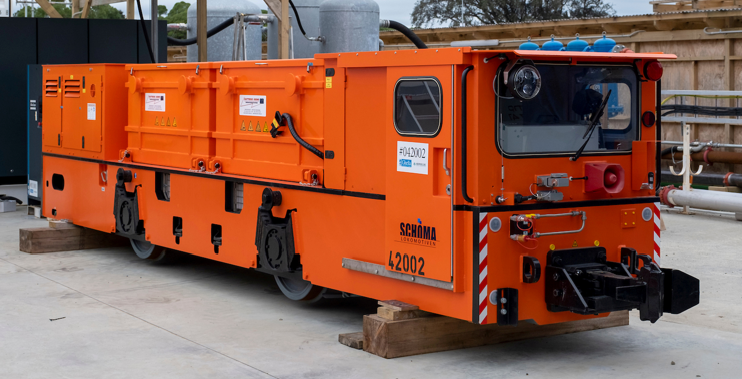
It’s a tradition that a TBM has a female’s name to honour St Barbara, the patron saint of tunnellers and miners. This as a sign of good luck for the project ahead. The machine for this project has been named Hiwa-i-te-Rangi, after one of the Matariki stars.
Students from schools along the CI tunnel route were asked to vote for the female star within the Matariki cluster they felt best matched the project goals and whose characteristics they liked. Hiwa-i-te-Rangi was the winning choice by more than 100 votes.
In the Matariki cluster of nine stars Hiwa-i-te-Rangi is the final and youngest star. Traditionally, Māori would send her their hopes, dreams, and goals for the new year.
The celebration of Matariki is closely linked to te taiao, the natural environment. It’s a time to celebrate growth and new beginnings, so these describe the CI Project well.
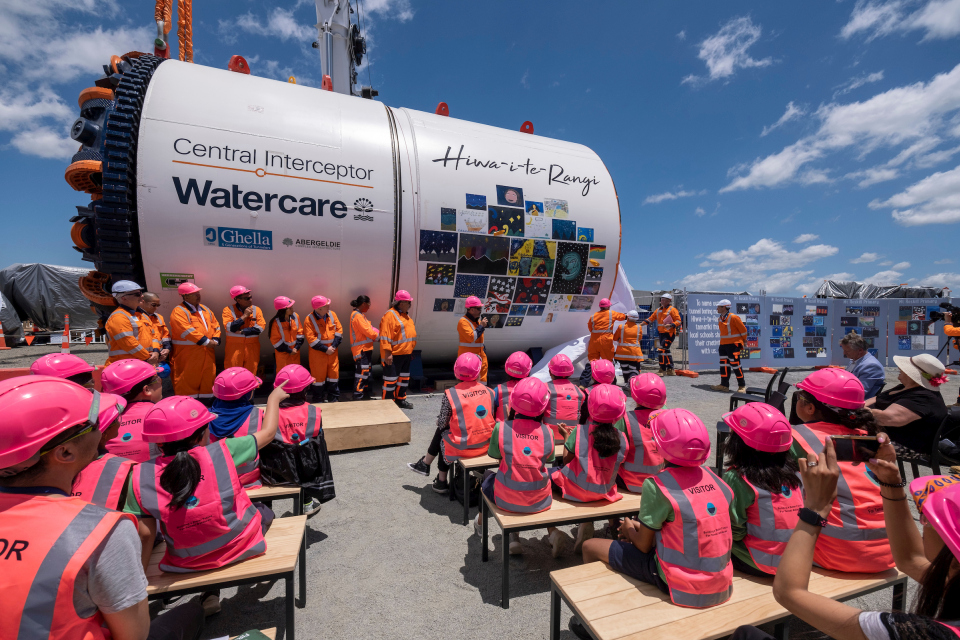
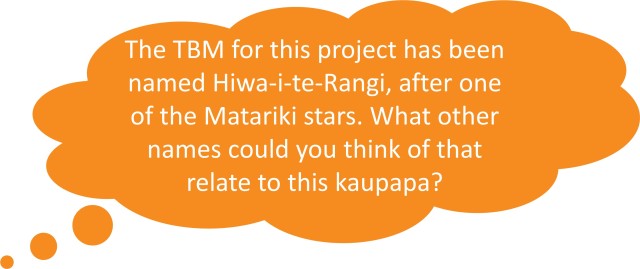
Try the big machine for a big job quiz.